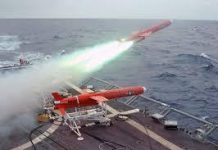
Clemenceau 25 Mission
During the “Clemenceau 25” deployment, the French Carrier Strike Group (CSG) ventured into the Pacific for the first time since the 1960s—a significant milestone for the French Navy. While the mission carried a strong diplomatic tone, it was far more than a goodwill visit; its primary objective was to assert France’s presence in a strategically important region where it holds national interests.
Although no direct confrontations occurred, the fleet faced considerable pressure from other nations’ forces, aimed at sending strategic signals—whether related to territorial claims or simply to test the CSG’s readiness.
Interactions with the PLAN
Throughout the mission, the CSG remained under constant observation by rival powers. Navy officials reported that the group was shadowed and monitored at various points, from being overflown by Russian Su-35 fighter jets near Syria to being tracked by Chinese vessels in Southeast Asia. “Our presence is both bothersome and intriguing to our competitors,” a senior officer stated.
As soon as the CSG entered the Luzon Strait, it was tailed by a Chinese Type 54 frigate. French officers estimated that 30 to 40 Chinese ships—including naval and militia vessels—were operating within an area covering roughly three-quarters of the Mediterranean’s size, which they described as a significant concentration of force.
The French fleet also encountered a Chinese aircraft carrier in the South China Sea. According to senior officials, the absence of conflict was due both to the strength of the French task force and to China’s possible strategy of deliberately downplaying the French presence. “They might have reacted differently if we were Americans,” an officer speculated, suggesting China’s approach to France differs from its stance toward the U.S.
In response to a question, the Admiral confirmed that no French ships transited the Taiwan Strait during this mission. Instead, a FREMM frigate and a replenishment vessel remained at Okinawa. “We felt it wasn’t necessary at the time. The frigate Prairial had already made that passage a few months earlier,” the officer noted.
Red Sea Transit
One of the most tense phases of the journey was navigating the Suez Canal, the Red Sea, and the Strait of Hormuz, both during the outbound and return legs. Despite ongoing Houthi rebel activity, neither the aircraft carrier nor its escort ships were targeted. However, the return journey posed greater risks due to the shifting geopolitical situation. “By the time we were heading back, U.S. airstrikes on Houthi positions had taken place, increasing the risk that they might confuse our carrier with an American one,” explained a senior officer.
The FREMM Alsace, part of the escort group, played a direct role in Operation ASPIDES during the return voyage and reportedly intercepted two UAVs. Upon arriving back in Toulon, markings of two UAV “kills” were spotted on its 76mm gun. While French media reported one interception, details about the second remain unclear.
Technological Advancements
The panel of officers did not delve deeply into the technical innovations used during the mission due to operational confidentiality. However, Naval News previously highlighted that this was the first time the CSG employed onboard data centers. These hubs significantly boosted computing power and enabled real-time simulations of operational scenarios.
During a parliamentary session, Navy Chief of Staff Admiral Nicolas Vaujour elaborated: “We deployed four interconnected data hubs across the CSG. They proved highly valuable. For example, when one of our frigates experienced mechanical damage, the data hubs, combined with AI, analyzed the data, pinpointed the faulty component, and traced the cause of the issue. We replaced the part and learned how to prevent a recurrence.”
These hubs were also used for strategic simulations, such as planning a transit through an “Indonesian strait.” By running hundreds of tactical scenarios, including potential submarine positions, the AI system recommended the optimal crossing strategy. “The results were fascinating,” added Admiral Vaujour.
In addition, the French Navy tested the L22 data link in an operational setting for the first time.
Logistics and Refueling
A mission of this magnitude demands robust logistics and regular resupply. While the aircraft carrier’s nuclear propulsion reduces its own fuel needs, constant replenishment of aviation fuel, food, and munitions is essential, as is support for the escort ships.
For this, the CSG relied on the French Navy’s new-generation fleet replenishment vessel (BRF), which the Chief of Staff described as a “game-changer.” The BRF can sail faster than its predecessors, carry larger loads, handle complex munitions like Aster missiles, and simultaneously refuel up to three ships at sea.
The deployment also allowed for testing innovative resupply methods. For instance, the tanker Jacques Chevallier conducted its first “consolidated cargo” operation (CONSOL) with the U.S.-chartered commercial tanker Stena Polaris, operated by the Military Sealift Command. This approach helps diversify resupply options, particularly in remote or hostile areas.




